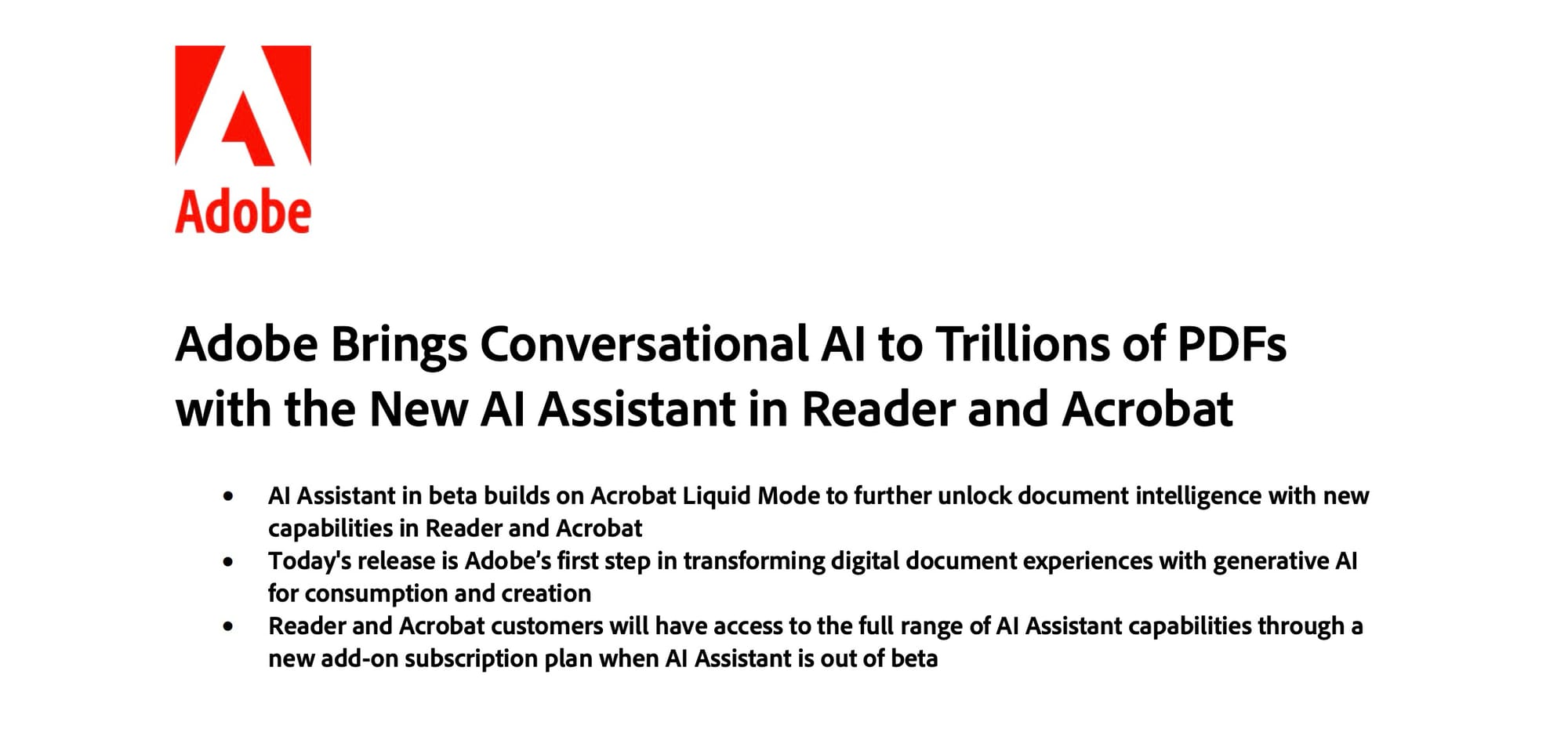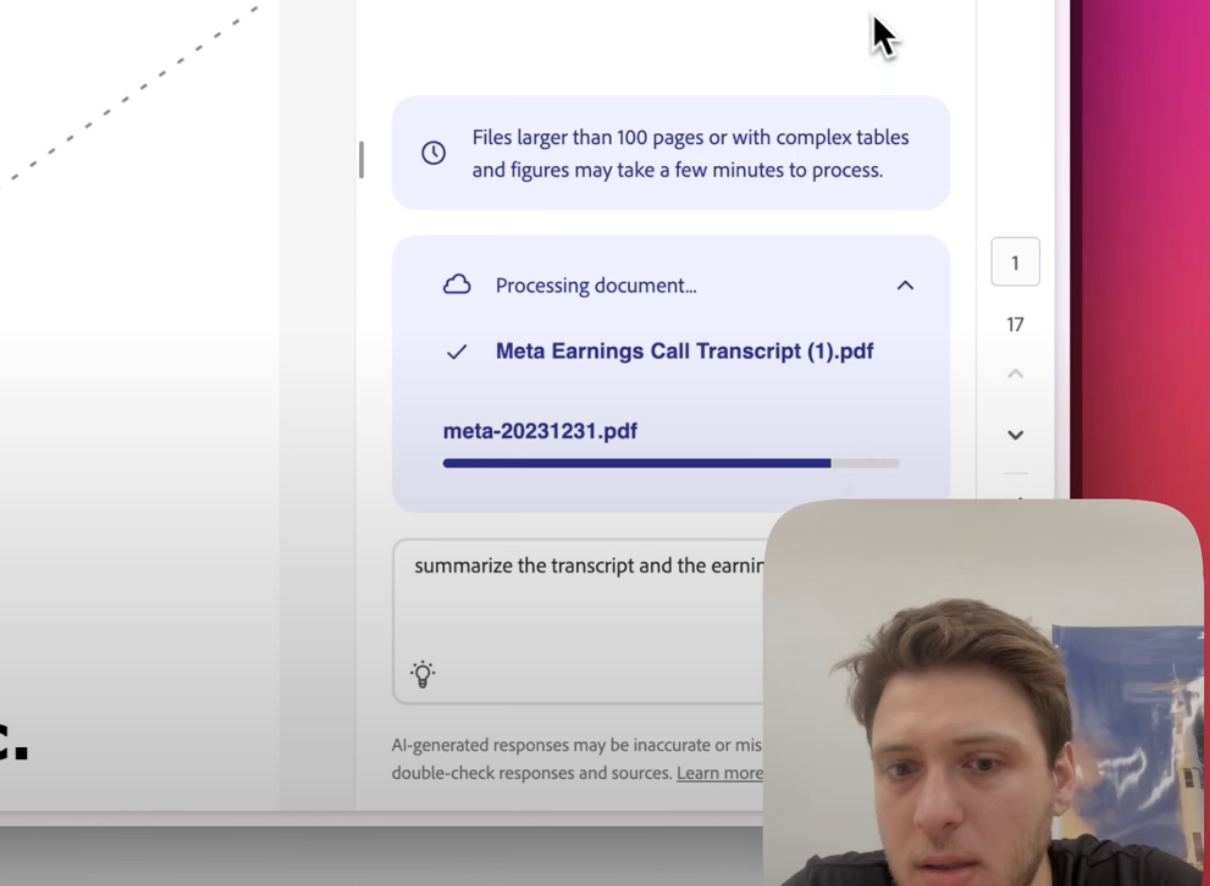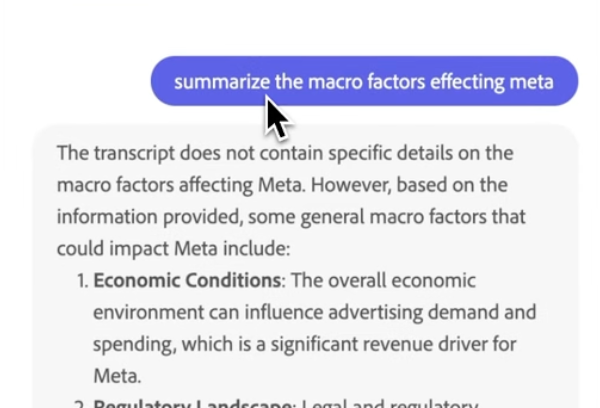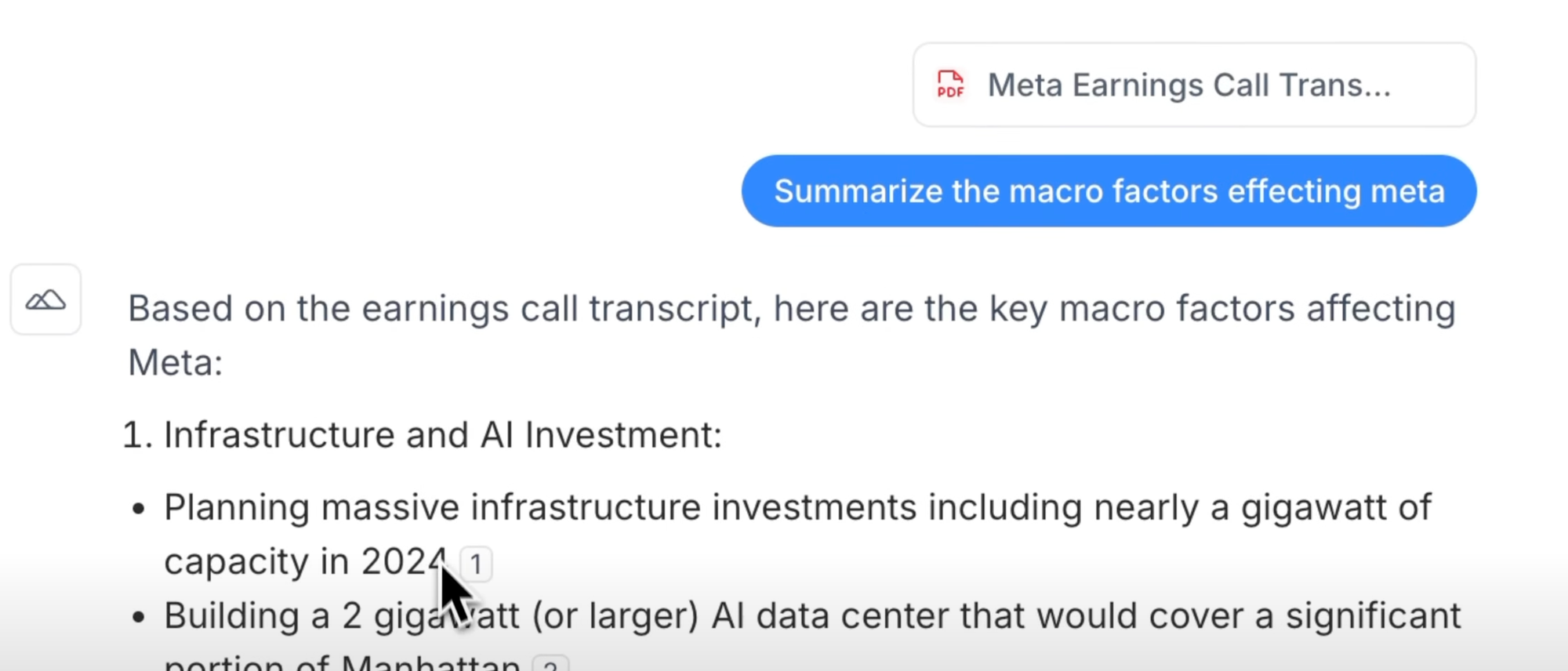Best Adobe Acrobat Alternative
What is the Best Alternative to Adobe Acrobat?
Macro and Adobe Acrobat are recognized widely as two of the top PDF readers integrated with AI features.
Adobe is an established SaaS company, widely recognized as the top PDF solution in the market, whereas Macro is an AI-native, early-stage startup oriented around secure, intelligent document management with collaborative features.
In 2024, Adobe formally rolled out its AI features out of closed beta, claiming to bring conversational AI to PDFs via its new AI Assistant (Acrobat Liquid Mode).
In the following post, we'll perform an objective comparison of the quality of the AI integration and LLM-generated output to determine which one comes out on top: Macro or Adobe Acrobat.

Adobe AI vs. Macro: Which is the Better PDF Reader?
In fact, Adobe Acrobat is not merely one of the original PDF apps—but the original PDF solution.
PDF, a short-form abbreviation that stands for "Portable Document Format," is a file format created by Adobe to present users with a convenient, reliable method to share and collaborate on documents, irrespective of the operating systems used by each party.
Since then, PDF has become an open standard format, formally maintained and standardized under the International Organization for Standardization (ISO).
However, in spite of the elaborate, close-knit history behind the PDF file format and Adobe, poor decisions compound (and in the aftermath, Adobe paid the price).
Once deemed the market leader in the PDF solutions sector, Adobe was formerly part of the select, few publicly-traded corporations considered to have achieved to establish a long-term, defensible "moat".
The user interface (UI), product design and integration of each feature to optimize one's productivity and workflow matter most to consumers, each of which, Macro is refined to meet customer expectations.
The prioritization and capital allocation of Adobe seems to have shifted towards upholding the current share price (and implied market valuation), in lieu of building out the top product suite in the market.
Given the market share of Adobe (and implied revenue opportunity), the competitive landscape soon became saturated, and Adobe's market positioning has dropped substantially.
Unlike Adobe, the priority at Macro is to build the most intuitive, cohesive document management platform, seamlessly integrated with cutting-edge AI features, rather than meeting earnings per share (EPS) quarterly targets and maneuvers to uphold the share price.
Macro vs. Acrobat AI Assistant: Live Demonstration
Since Adobe decided to pivot into the GenAI vertical and rebrand itself as an "intelligent" PDF solution, we took it upon ourselves to put Macro and Adobe head-to-head.
In 2024, Adobe introduced the AI Assistant, initially an optional add-on (open-beta), before the complete roll-out of the AI initiative across the entirety of the product ecosystem, even to certain enterprise users.
The strategic initiative and R&D spend on AI was most likely to mitigate the risk of churn and not incur a steep reduction in its annual recurring revenue (ARR), considering how cut-throat the document management solutions market has become—not to mention, the industry-wide margin compression.
However, the internal issues and poor corporate decisions of Adobe in recent times, such as the early-cancellation penalty controversy, are not our concern, albeit quite amusing.
The most fair method to compare two competing products is to place them side-by-side in a live demonstration, where the tasks assigned and circumstancial conditions are identical to remove the risk of bias skewing the findings ("apples to apples").
The following search query was input into the chat interface of each respective platform:
“What macro factors are effecting the company”.
Here is the full video, where our founder and CEO, Jacob Beckerman, compares Adobe Acrobat (and AI Assistant) to Macro:
The outcome?

"A picture is worth a thousand words," as the saying goes.
But Macro? $20.00 per month.
Macro vs. Adobe AI: Which PDF Tool is Better?
In our live demonstration, a rather simple query was input onto each platform:
"summarize the macro factors effecting Meta"
The documents uploaded to each platform was initially the latest 10-K from Meta, followed by the coinciding earnings transcript in the next test.
Macro instantly understood the assignment, and responded with the risk factors pertaining to the macroeconomic conditions that could hinder the operating performance of Meta.

Adobe, on the other hand, took seemingly forever to even process the uploaded document, only to provide a non-answer to the original question in broad strokes, followed by excess verbiage.
The summary of the macro risk factors by Acrobat were about as insightful as stating that a company's revenue might drop if fewer products are sold.
Acrobat AI is not only slow, but not smart.
For comparison, here is Claude’s answer in Macro:

The output from Macro presents a real answer that directly addresses the question and properly identifies some of the macroeconomic factors that posed a material risk to Meta’s operating performance.
The difference in the speed at which documents are ingested on the platform, and the quality of output (and depth of insights) were night and day, in favor of Macro.
Hence, our demonstration further supported the notion that Macro is the best AI PDF reader in the market, and substantially ahead of the curve relative to legacy software companies, like Adobe.
In the next part of our exercise, two documents were uploaded to Adobe, or more specifically, attempted to be uploaded.
The distinction must be pointed out here, oddly, because users in Adobe can technically upload two files for the AI to process. But then the option to chat with multiple PDFs, at one time, is no longer there.
Unlike Adobe Acrobat, a user can easily chat with many docs at once in Macro, with the optionality to select the underlying LLM.
Of course, the users subscribed to Adobe could bypass the matter by opening-up multiple browser tabs as a workaround, but then the AI is incapable of analyzing the uploaded documents, collectively.
In effect, the Adobe AI Assistant cannot synthesize information across the two documents, likely from exceeding the context window, but no form of communication was offered to clarify the circumstances.
In contrast, users of Macro can easily upload (or even drag) multiple files into the chat interface to ask questions, or opt to reference the file via the "@" function.
While comprehending the rationale (or limitations) would be useful for users, Adobe refrains from explicitly disclosing which AI model provider is used, or if an error message had appeared.
But evidently, the output did not meet even the initial set of expectations, which were not even that challenging, frankly.
However, perhaps the underlying LLM is outdated or the date they chose to conduct the comparison happened to be an off-day for the product, so we opted to hand Adobe the benefit of the doubt.
